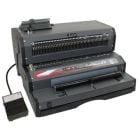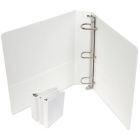Give a Great Presentation at School
Putting together a presentation for school can be a little bit stressful, to say the least. Here are a few tips to get you headed in the right direction.
Preparation
More than likely, you have a good set of guidelines from your teacher or professor. Give them a good going over, and start brainstorming and making notes. If you can, arrange to meet with your professor to see if he or she have any additional thoughts as to what you might do with your presentation, and what some good places might be to begin your research.
When it comes to research, whatever you do, don't let Google do all the work. In fact, it might be a good idea to pretend, at least for a day or two, that the modern search engine doesn't exist at all, and turn to some old-school methods. For instance, you can make your friendly local librarian's day by going to the library and having a conversation with the with him or her about your topic, and where you might find some good research material. Or, you could contact an expert in the field and conduct an informational interview. These are the kinds of things that will give your presentation that something extra, and you will learn a lot more, and have a lot more fun in the process.
Putting It Together
Once you have all your notes and research together, you should start to put together an outline and general plan for the flow of the presentation. You will want to make sure there is time for a brief but informative introduction, as well as some sort of conclusion at the end. For all intents and purposes, you are creating a research paper in talking form. After the introduction, start to create your narrative in a way that will keep your audience entertained. Don't fall into the trap of thinking that you have to start at the chronological beginning of you tale. Some of the best stories start in the middle and work outward and inward from there.
Multi-Media
You should, of course create a PowerPoint presentation to go along with your talk. Don't go overboard, or rely on your slide show too heavily, however. Keep the number of slides to no more than about 15 for a one-hour presentation. As far as other multi-media, if there are tangible examples of what you are presenting on, bring them and hand them out to pass around.
Your PowerPoint slides should be printed out and bound together along with any other handouts you might have and bind them together in an attractive and easily-read way, such as with spiral coil or plastic-comb binding. These are relatively inexpensive and your school may even have the binding machines you will need, making the process even less expensive.
Practice!
You should make sure that you reserve plenty of time to practice your presentation (including transitions to and from your multi-media) before you give it. The more you practice, the more comfortable you will be while giving your presentation. Enlist the help of friends and family to give you some constructive feedback. Make sure that you leave a little time at the end of your presentation for questions, and dress up, of only a little bit, to give yourself a more professional appearance.









